主要是重写attemptAuthentication方法
导入依赖
<dependency> <groupId>org.springframework.boot</groupId> <artifactId>spring-boot-starter-security</artifactId> </dependency> <dependency> <groupId>org.springframework.boot</groupId> <artifactId>spring-boot-starter-web</artifactId> </dependency>
相关配置和代码
application.properties配置密码
spring.security.user.name=admin
spring.security.user.password=123
创建自定义身份过滤类
写json登录之前先看一下源码,了解一下它是如何表单登录的
在idea连按下shift键,搜索UsernamePasswordAuthenticationFilter类
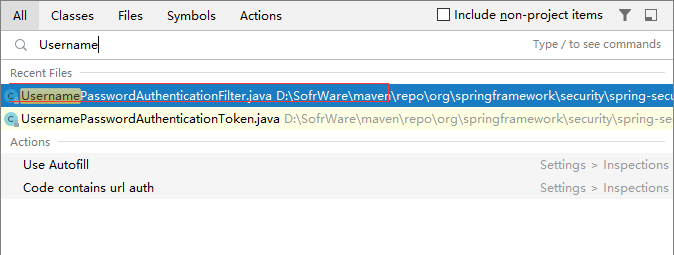
进入后再按Ctrl+F12可以查看该类的所有方法

进入方法
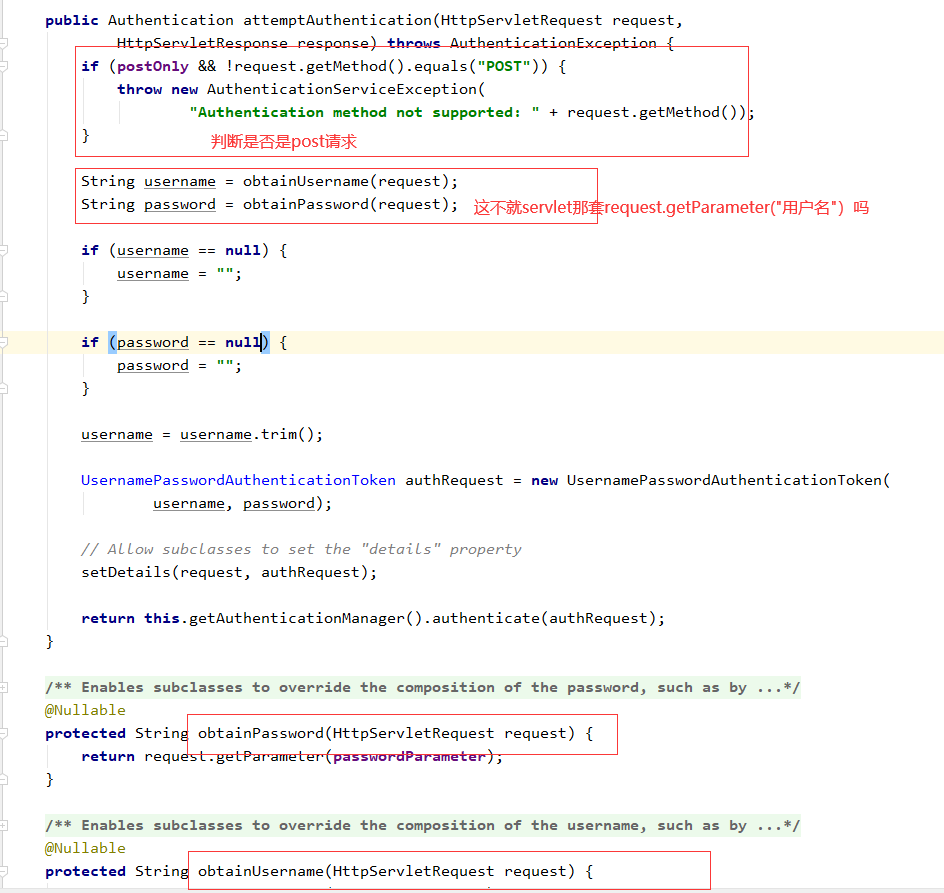
我们只需要在request.getParameter()那里重写一下不就可以实现json登陆
重写attemptAuthentication(HttpServletRequestrequest,HttpServletResponseresponse)方法
只需要复制父类的方法,多加一个判断json的方法。就能同时支持key-value形式可json形式的参数了

public class MyAuthenticationFilter extends UsernamePasswordAuthenticationFilter {
@Override
public Authentication attemptAuthentication(HttpServletRequest request, HttpServletResponse response) throws AuthenticationException {
if(!request.getMethod().equals("POST")){
throw new AuthenticationServiceException("Authentication method not supported" + request.getMethod());
}
//说明是以json的形式传递参数
if (request.getContentType().equals(MediaType.APPLICATION_JSON_VALUE)) {
String username = null;
String password = null;
//将传入的json数据转换成map再通过get("key")获得
try {
Map<String,String> map =new ObjectMapper().readValue(request.getInputStream(),
Map.class);
username = map.get("username");
password = map.get("password");
} catch (IOException e) {
e.printStackTrace();
}
if (username == null) {
}
if (password == null) {
}
username = username.trim();
UsernamePasswordAuthenticationToken authRequest =
new UsernamePasswordAuthenticationToken(username, password);
setDetails(request, authRequest);
return this.getAuthenticationManager().authenticate(authRequest);
}
return super.attemptAuthentication(request, response);
}
}
创建SecurityConfig配置类
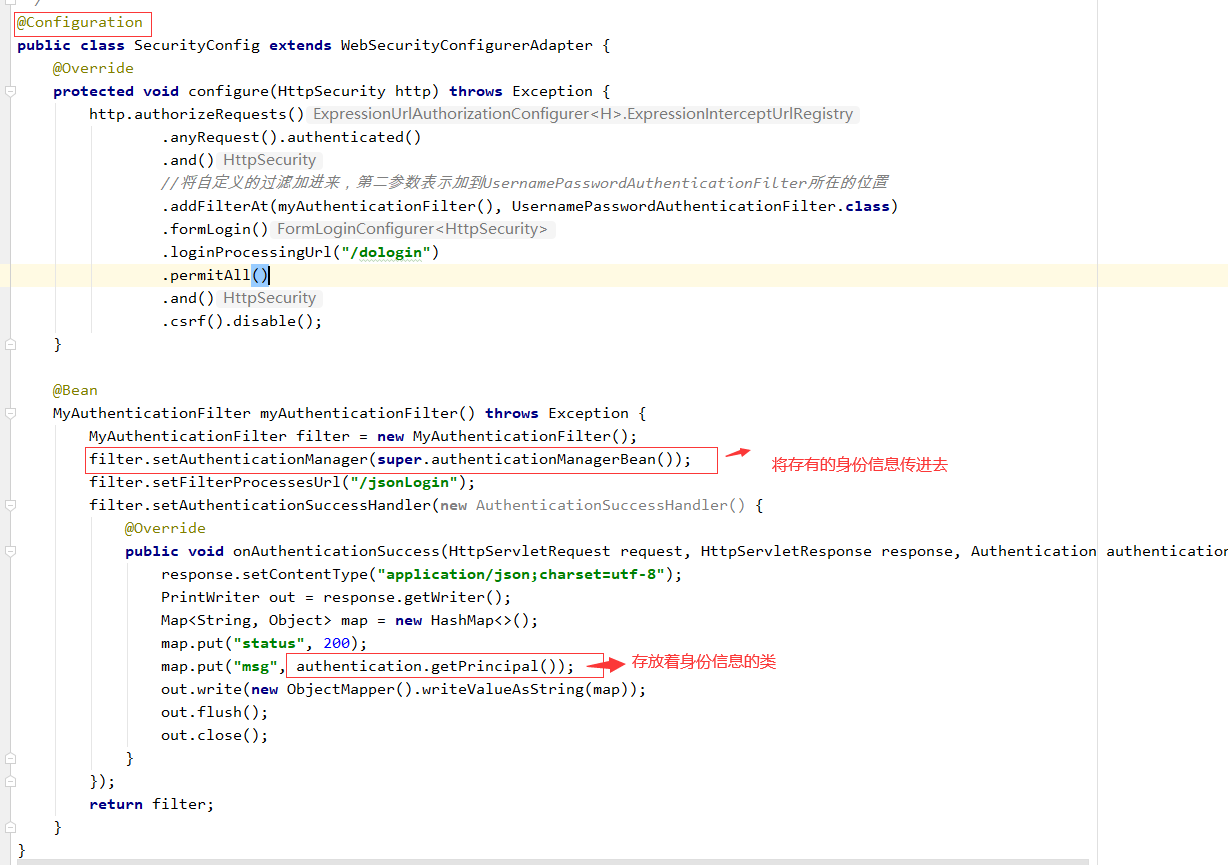
注:自定义的过滤类和security原来那个表单登陆过滤设置是分开的
体现在filter.setFilterProcessesUrl()和loginProcessingUrl
因此表单登陆和json登陆的,successHandler判断也要分开写,
一会下面有效果图也可以印证这一点
@Configuration
public class SecurityConfig extends WebSecurityConfigurerAdapter {
@Override
protected void configure(HttpSecurity http) throws Exception {
http.authorizeRequests()
.anyRequest().authenticated()
.and()
.formLogin()
.loginProcessingUrl("/doLogin")
.permitAll()
.and()
.csrf().disable();
//将自定义的过滤器加进来,第二参数表示加到usernamePasswordAuthenticationFilter所在的位置
http.addFilterAt(myAuthenticationFilter(), UsernamePasswordAuthenticationFilter.class);
}
@Bean
MyAuthenticationFilter myAuthenticationFilter() throws Exception{
MyAuthenticationFilter filter = new MyAuthenticationFilter();
filter.setAuthenticationManager(authenticationManagerBean());
return filter;
}
}
创建Controller
@RestController
public class HelloController {
@GetMapping("/hello")
public String hello(){
return "hello security";
}
}
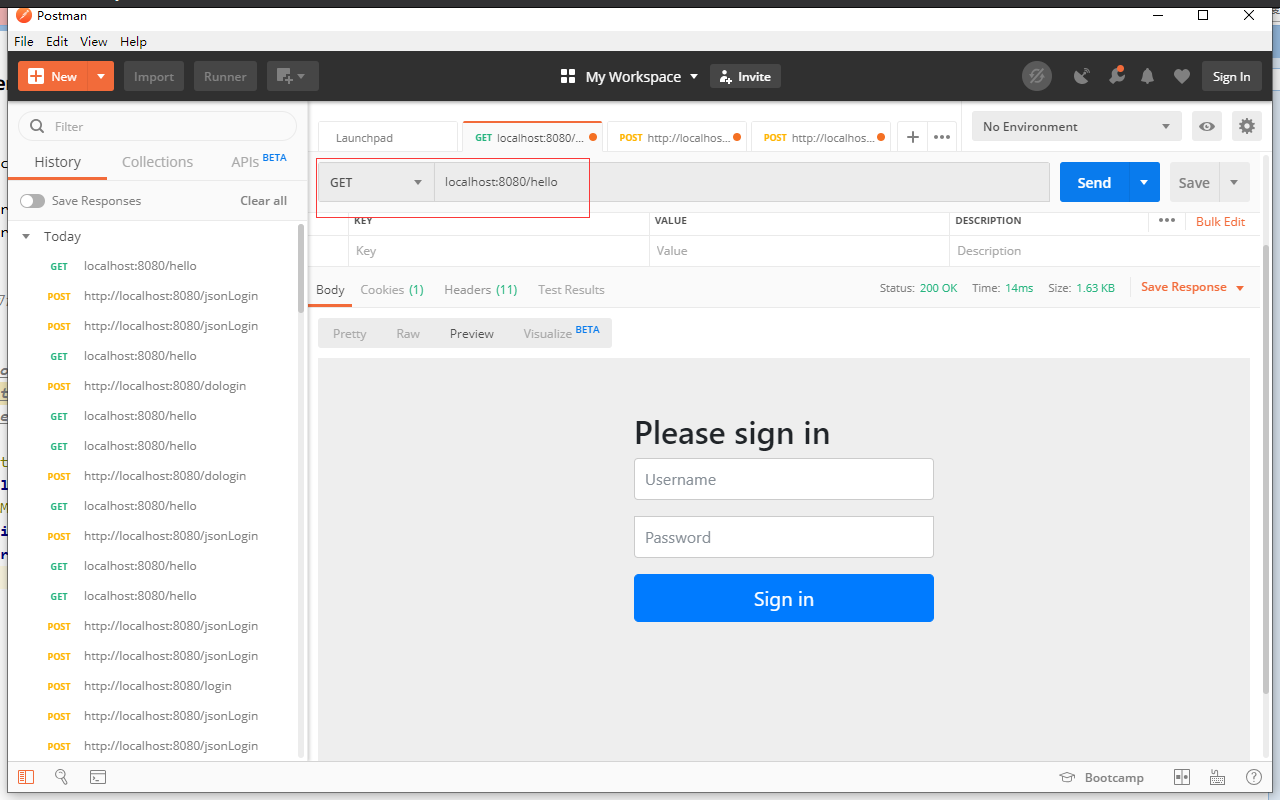
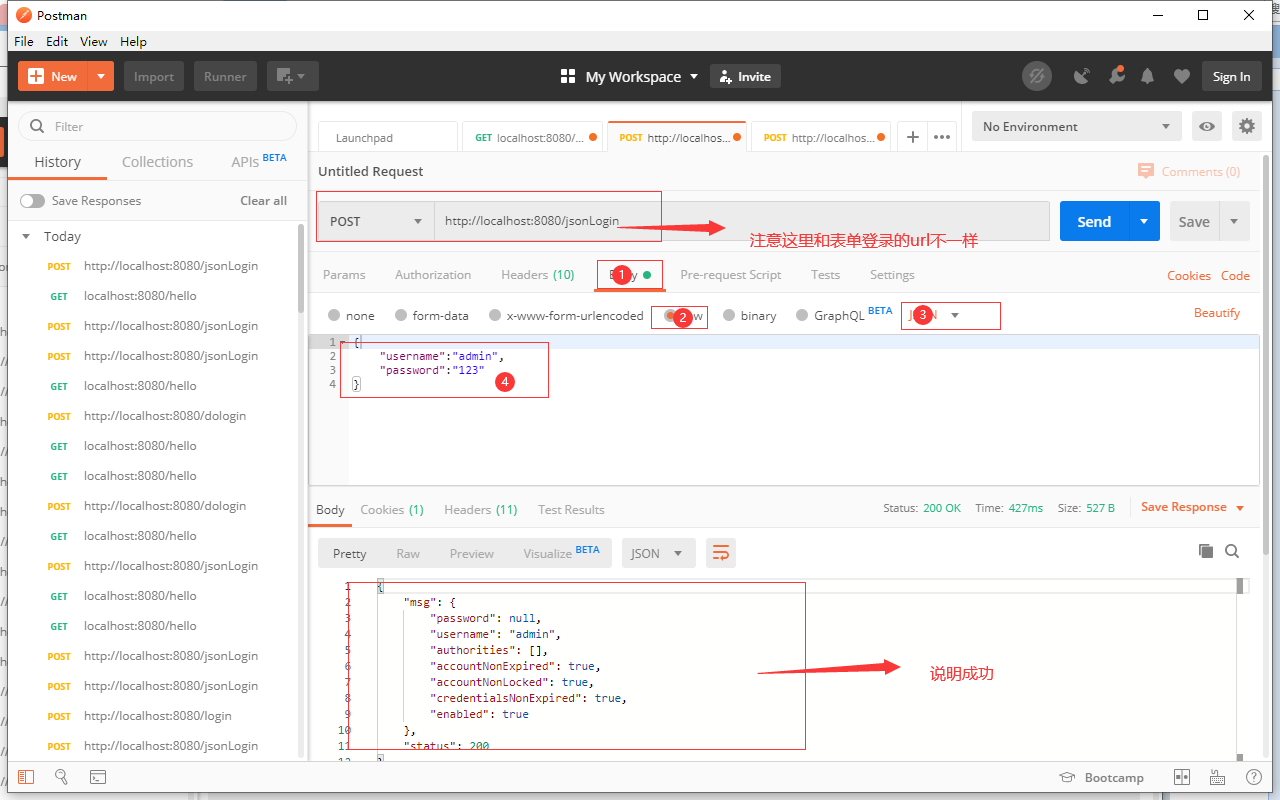

以上就是本文的全部内容,希望对大家的学习有所帮助,也希望大家多多支持自学编程网。

- 本文固定链接: https://zxbcw.cn/post/193404/
- 转载请注明:必须在正文中标注并保留原文链接
- QQ群: PHP高手阵营官方总群(344148542)
- QQ群: Yii2.0开发(304864863)
